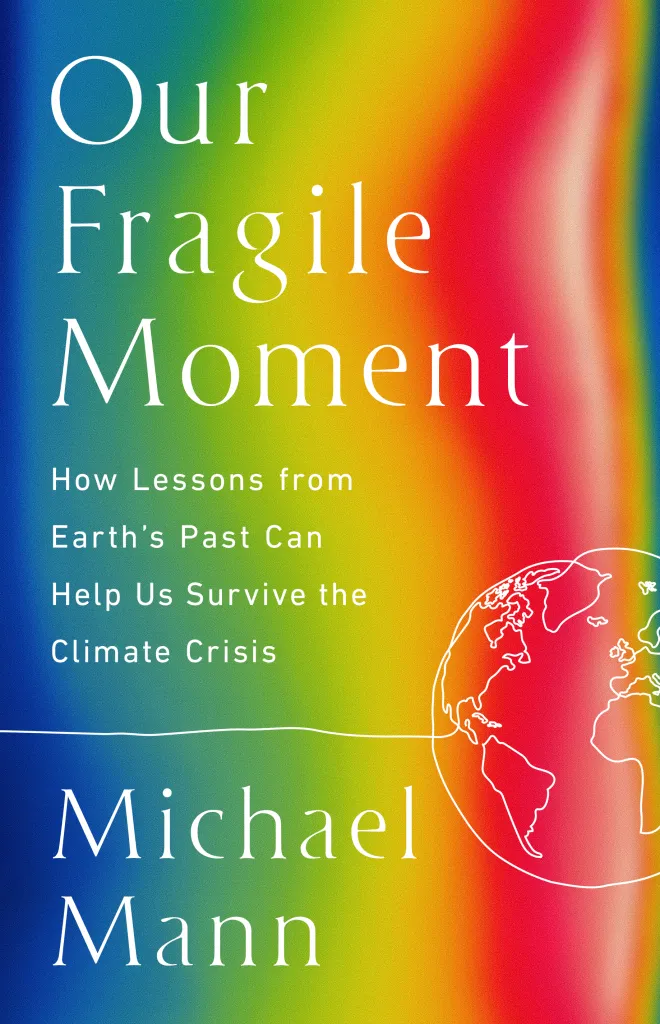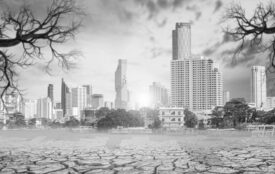How do we get out of the crisis?
This winter was once again far too warm: the warmest winter and the warmest February since 1870. We have just had a winter that was too warm, but also too wet.
We experienced spring-like temperatures in Germany in February, but also in January. We have now had 13 very mild and too warm winters in a row. This year’s February was warmer than the average March. February precipitation was 50% above average. The average temperature in February 2024 in this country was an unprecedented 6.6 degrees plus.
The world’s oceans are warmer than ever before. Climate researchers around the world are sounding the alarm: the Gulf Stream is threatening to tip. It is the most important ocean current for Europe. This could mean a cooling of up to 20 degrees for northern Europe, but northern Germany would also be severely affected, as the heat conduction that the Gulf Stream brings to Europe could break off as a result of glacial melting. This could mean an ice age for the north of Europe and a hot age for the south unless swift and far-reaching climate protection measures are taken. “Climate protection is today, not tomorrow,” writes the Süddeutsche Zeitung.

Global warming is exceeding our ability to adapt. “It exceeds anything we have experienced in the last 120,000 years,” writes US climate researcher Michael E. Mann in his new book “Our Fragile Moment”.
The current global warming is heading towards three degrees plus compared to the time before industrialisation. With just two degrees more, we are jeopardising human existence in many regions of the world. Africa will become uninhabitable and Europe will become Africa.
That means hundreds of millions of climate refugees in Central and Northern Europe. If we do not succeed in achieving at least the Paris target of at most 1.5 degrees more than in the pre-industrial era, then we should aim for at least 1.6 degrees and if we do not achieve 1.6 degrees, then we should aim for 1.7 degrees, writes Michael E. Mann. Every tenth of a degree less will save millions of lives.
He warns: “We are currently warming the planet a hundred times faster than during the natural warming of 56 million years ago, which was extremely rapid in geological time…Previous generations perished because the climate changed abruptly. And the warming we are causing today is more abrupt than anything we know from the past.”
However, Professor Michael E. Mann also sees an opportunity for us to take dramatic and immediate climate protection measures, at least now. It is still not too late. In Germany in particular, we have all the technologies we need to green our cities by 2035 or 2040 at the latest, to organise the complete energy and transport transition as well as part of the agricultural transition. A high quality of life with far less environmental impact is possible. This is not about sacrifice, but about greater common good, i.e. a win-win situation for everyone.
The best time for solar energy is now!
There have long been many useful and helpful ideas for a future-proof and sustainable Germany and Europe. It has long been proven that every roof, every window, every tile and every façade can produce solar energy. But also along the railway and motorway as well as solar systems via agri-photovoltaics over arable land. “Trees on the roofs and forests in the city” is not a utopia, but a feasible vision. Fewer and smaller electric cars, soon to be autonomous, will bring more peace and quiet to cities. And in future, fewer animals can be kept in less cramped stables if we eat a healthier diet. That is also a gain.
The plus-energy houses that solar architect Rolf Disch has been building in Freiburg and elsewhere for 30 years produce three times more electricity than the residents need and no longer require fossil thermal energy. The roof earns money. Farmers are also becoming energy farmers. In the Rhine-Hunsrück district, around 400 wind turbines are turning and producing around three times as much electricity as the 100,000 inhabitants there consume. And Stadtwerke München already produces over 90 per cent clean green electricity for the city of two million inhabitants. In just a few years it will be 100 per cent.
In Germany, we already had 54 per cent green electricity in 2023. The price of generating a kilowatt hour of solar power has fallen by a sensational 90 per cent in the last 15 years. Unprecedented in industrial history. In Africa, the production of one kilowatt hour of solar power already costs one euro cent. What an opportunity for development! Kenya, Costa Rica and Iceland already generate almost 100 per cent of their electricity from renewable sources. This shows that electricity and heat from wind and sun are far cheaper than electricity and heat from fossil-fuelled nuclear power generation.
The motto of sustainable agriculture: quality instead of quantity. Environmental protection, science and agriculture are forming a new coalition for the future. Austria and Italy already have around 30 per cent organic farming today, three times as much as Germany.
Professor Ulrike Malmendier, an economist and advisor to the German government, sees huge growth opportunities in the green transformation and artificial intelligence. The German economist, who teaches in the USA, believes that less controversy and concerns in Germany, less fear of the future, but more courage and confidence are the prerequisites for this and says in “SPIEGEL”: “Politicians must give people the impression that they can help shape and control the transformation.”
I wish you, dear readers of the sunny side, an appetite for the future!
Source
Franz Alt 2024 | Translated with www.DeepL.com/Translator (free version)








